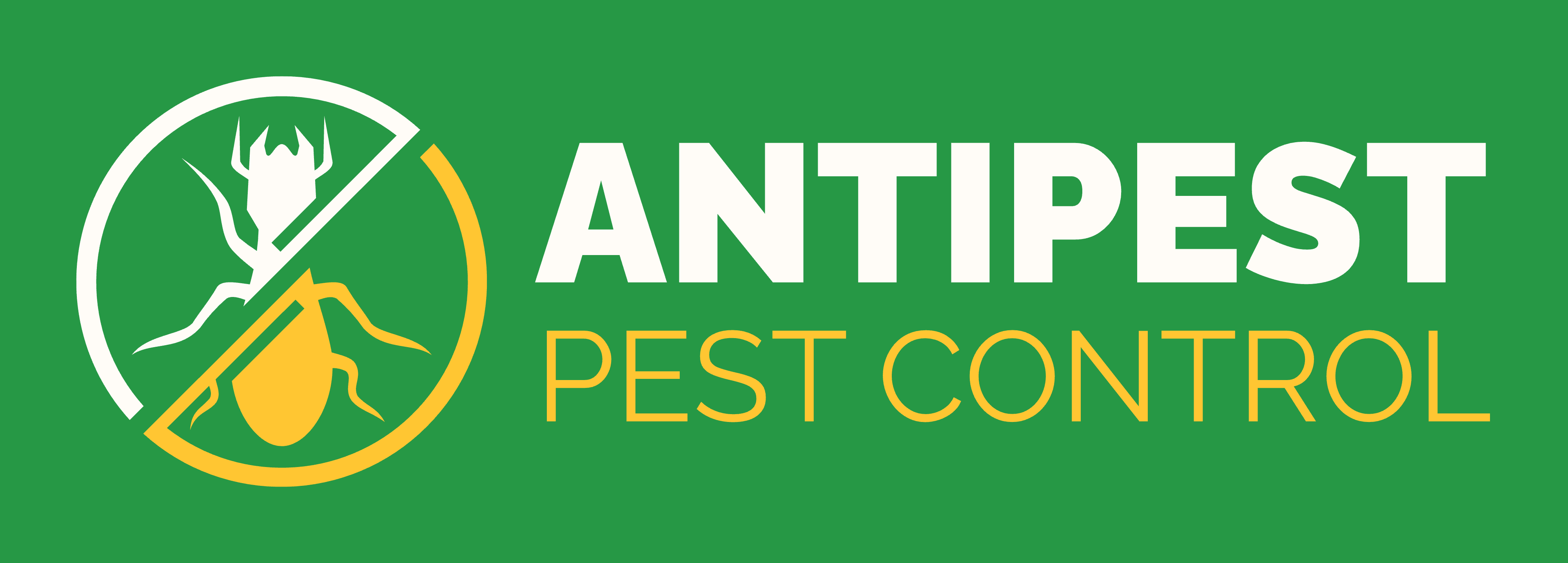Ants are one of the most common kitchen pests, and they always seem to appear when you least expect them. Whether it’s a trail leading to your sugar jar or a sudden invasion near the sink, these insects are persistent. If you’ve been wondering how to get rid of ants in the kitchen, you’re not alone, this is a problem faced worldwide.
The kitchen offers everything ants need to survive: food sources, moisture, and entry points from outside. But the good news is, with the right strategies, you can take control of the situation. This guide will not only show you how to get rid of ants in the kitchen but also how to prevent them from coming back. By the end, you’ll have actionable steps tailored for long-term results.
Table of Contents
Why Do Ants Target Kitchens?
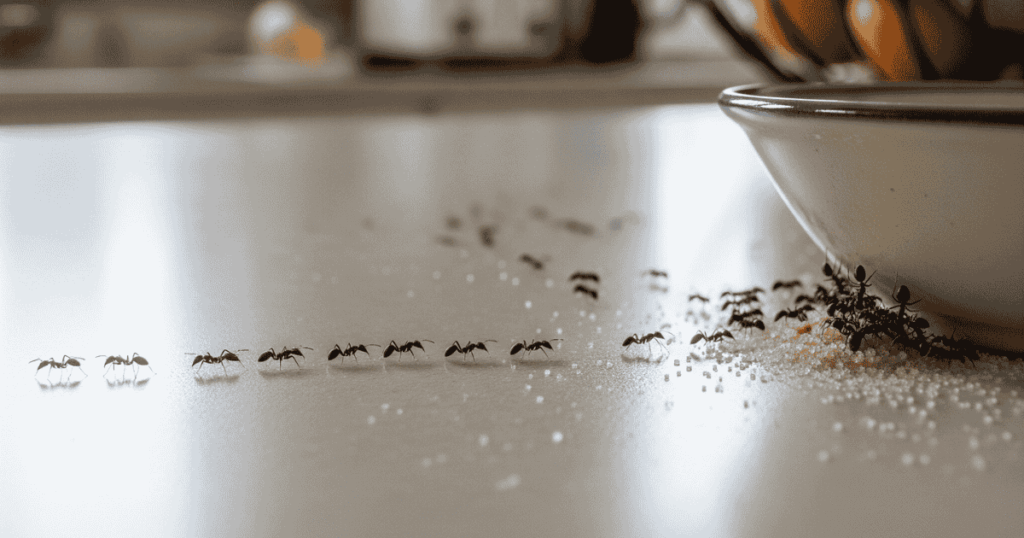
Understanding why ants enter your kitchen is the first step to solving the problem. Kitchens provide ideal conditions for ants to feed, breed, and thrive.
Ants are attracted to:
- Sugary foods: Spilled juices, fruits, or dessert crumbs are irresistible.
- Protein and grease: Leftover meat, pet food, or unwashed dishes.
- Moisture: Water leaks around sinks and faucets.
- Easy entry: Cracks, windows, and door frames act as their highways.
Common Reasons Ants Infest Kitchens
| Attraction Factor | Examples | Why It Matters |
| Sugar and sweets | Honey drips, spilled juice, candy | High-energy food for ants |
| Proteins & fats | Leftover meat, cooking grease | Protein essential for colonies |
| Moisture & water | Sink leaks, wet sponges, plant trays | Ants need a water source |
| Entry points | Cracks, windows, unsealed food jars | Easy way to access kitchen food |
The more you understand the cause, the easier it becomes to apply the right steps for how to get rid of ants in the kitchen effectively.
How to Prevent a Kitchen Ant Infestation?
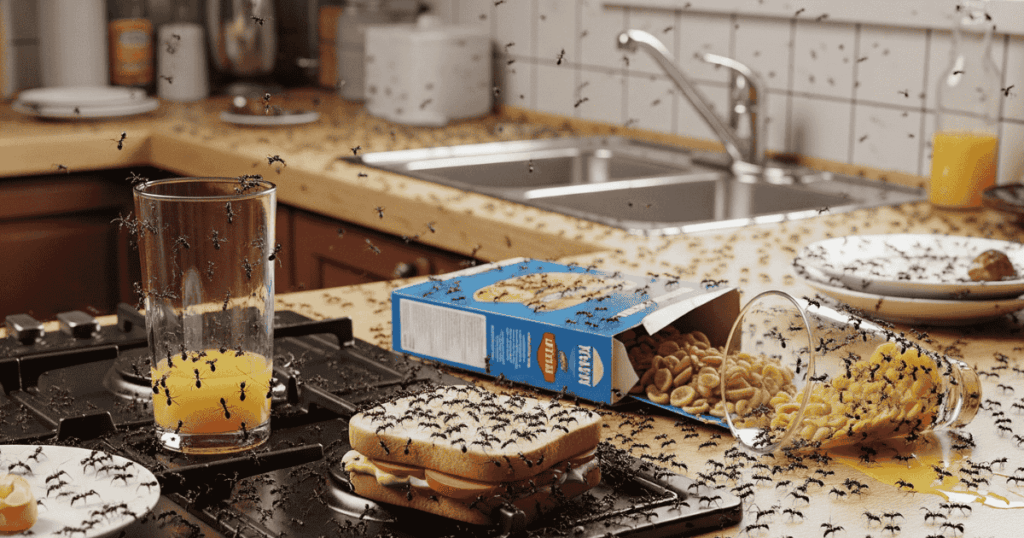
Preventing ants is far easier than eliminating them once they’ve invaded. If you want to avoid dealing with the hassle of figuring out how to get rid of ants in the kitchen, consistent prevention practices are key. By cutting off food sources, sealing entry points, and keeping your kitchen clean, you make the space less attractive to ant colonies.
Simple Prevention Tips:
- Keep food sealed in airtight containers instead of leaving packets open.
- Clean spills and crumbs immediately, especially sugary or greasy residues.
- Empty trash bins regularly and always use a tight-fitting lid.
- Fix leaks under sinks and keep counters dry to eliminate water sources.
- Seal cracks and gaps around windows, doors, and baseboards to block entry points.
- Deep clean pantries and cabinets every few months to remove hidden attractants.
Maintaining these habits ensures ants have no reason to invade, reducing the chance that you’ll ever need to worry about how to get rid of ants in the kitchen again. Prevention keeps your kitchen safe, hygienic, and pest-free year-round.
Common Types of Kitchen Ants
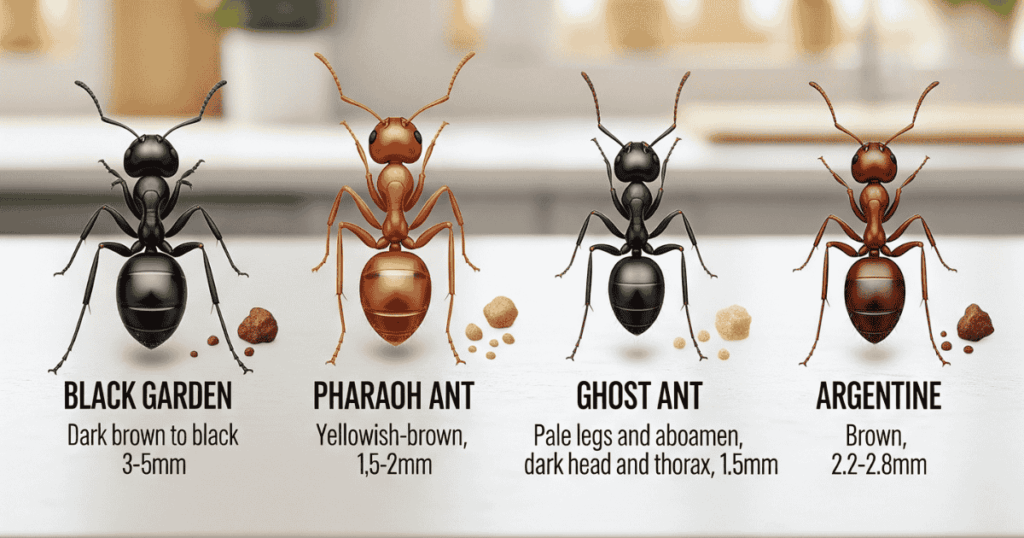
Knowing the type of ant infesting your kitchen is crucial. When searching for how to get rid of ants in the kitchen, correct identification becomes the very first step. Different species have unique habits, so identifying them can help you apply the right remedy effectively.
| Ant Type | Appearance | Habit | Control Method |
| Sugar Ants | Small, black or brown | Attracted to sweets | Vinegar, sealed containers, baits |
| Carpenter Ants | Larger, dark-colored | Nest in wood, moist areas | Repair wood damage, professional help |
| Grease Ants | Very tiny, pale brown | Feed on protein, oily foods | Clean grease, soap spray, bait traps |
| Odorous Ants | Brown/black, emit odor | Prefer sweets, moisture areas | Vinegar, soapy water, repellent sprays |
Correct identification ensures your control efforts are not wasted. For example, using sugar baits on grease ants won’t deliver results. Instead, linking the right solution to the right species is key when figuring out how to get rid of ants in the kitchen.
How to Get Rid of Ants in the Kitchen: 7 Proven and Simple Steps
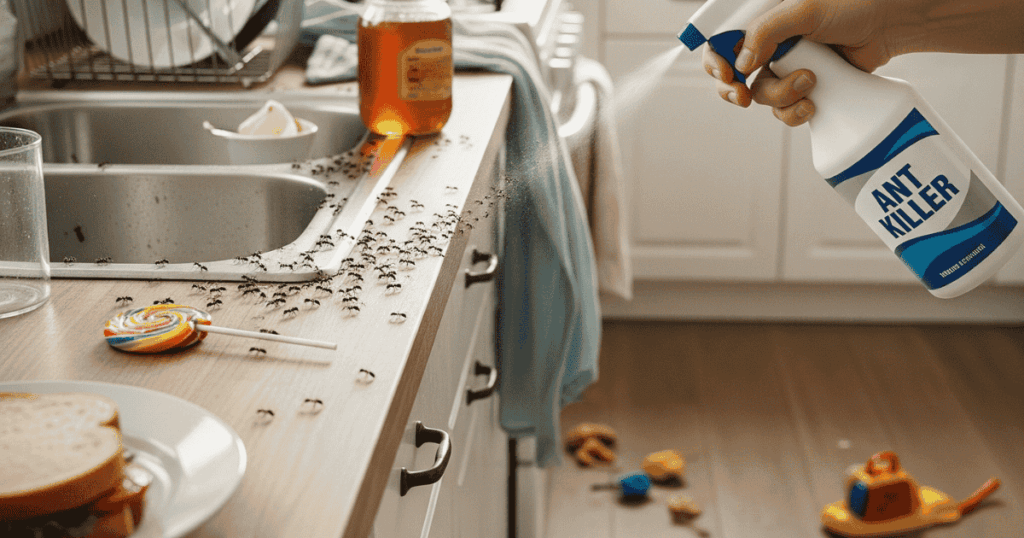
Dealing with ants in your kitchen can be frustrating, but with the right steps, you can eliminate them effectively and prevent future infestations. The process starts with identifying the ant species, followed by deep cleaning to remove attractants. Natural remedies and baits help target colonies, while sealing entry points keeps ants out. With safe use of sprays and ongoing preventive habits, you can maintain an ant-free kitchen long-term.
Step 1: Identify the Ant Species
Not all ants are the same, and knowing which type is in your kitchen helps decide the best removal method.
Common Kitchen Ants:
- Sugar Ants: Attracted to sweet substances.
- Grease Ants: Crave fats and oily foods.
- Carpenter Ants: Infest damp wood inside kitchen structures.
- Pharaoh Ants: Difficult to eliminate; often spread diseases.
Different ants respond better to different baits or repellents. For instance, sugar ants will fall for a syrupy trap, while grease ants are better targeted with fatty bait.
Step 2: Cleaning the Kitchen Thoroughly
The foundation of how to get rid of ants in the kitchen always starts with cleaning. Without removing what attracts them, no trap or spray will work long-term.
Cleaning Checklist:
- Wipe countertops after every meal.
- Store sugar, rice, and flour in airtight containers.
- Dispose of garbage daily.
- Clean food spills under stoves and refrigerators.
- Wash dirty dishes immediately.
By eliminating food trails, you disrupt the ant communication system (pheromone trails) and discourage exploration in your kitchen.
Step 3: Natural Remedies to Control Ants
Home remedies are safe, affordable, and effective for mild infestations.
Natural Solutions That Work:
- Vinegar solution (50:50 with water): Wipe countertops and floors to erase scent trails.
- Lemon juice spray: Works as a natural deterrent due to acidic properties.
- Cinnamon or cloves: Acts as a barrier when sprinkled at entry points.
- Borax and sugar bait: Ants carry this mixture back to the colony, eliminating it.
- Peppermint or tea tree oil: Strong scent deters ants naturally.
Using these remedies helps you take a chemical-free approach to how to get rid of ants in the kitchen effectively.
Step 4: Applying Ant Traps and Baits
When natural remedies fail, commercial traps and baits offer better control.
Options Include:
- Liquid ant baits: Attract sugar-loving ants.
- Protein-based bait stations: For grease or protein-seeking ants.
- Gel baits: Easy to apply around baseboards or counters.
- Granular bait: Can be sprinkled near entryways or behind appliances.
Baits are more effective than sprays since they target colonies, not just visible ants.
Step 5: Blocking Entry Points
Eliminating the colony is only half the job; sealing entry prevents future invasions.
Steps to Seal Entry Points:
- Caulk windows and door frames.
- Seal cracks in tiles and walls.
- Repair leaky kitchen pipes.
- Keep doors and windows screened.
Once sealed, your kitchen becomes harder to access, making future problems with how to get rid of ants in the kitchen less likely.
Step 6: Using Chemical Sprays Safely
Sometimes infestations are large, requiring insecticides. While sprays kill ants instantly, they don’t always target colonies.
Safe Usage Tips:
- Spray only in problem spots, not on food surfaces.
- Ventilate the kitchen after use.
- Keep away from children and pets.
- Use ant-specific sprays instead of general pesticides.
Only use sprays when absolutely necessary, combining them with bait strategies for lasting results.
Step 7: Ongoing Prevention Strategies
Once ants are gone, prevention ensures they never return.
Prevention Habits:
- Regular kitchen deep cleaning.
- Locking pantry items in sealed jars.
- Emptying garbage bins frequently.
- Fixing damp spots.
- Regular inspection of windows and cracks.
Long-term vigilance saves you from having to repeat the cycle of how to get rid of ants in the kitchen again.
Natural Home Remedies on How to Get Rid of Ants in the Kitchen?
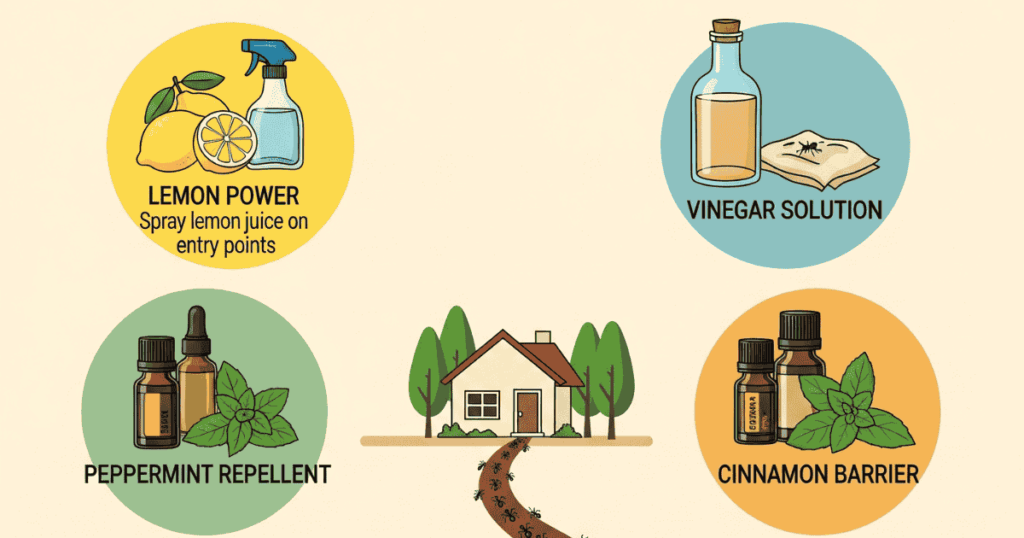
When wondering how to get rid of ants in the kitchen, natural solutions are often the safest, especially around food and kids. These remedies don’t rely on harsh chemicals.
Vinegar Spray
Mix equal parts water and white vinegar in a spray bottle. Spray directly on ants and along entry points. Vinegar not only kills some ants but also destroys scent trails, stopping new ants from following.
Lemon Juice
Lemon juice acts as a natural deterrent since ants dislike acidity. Squeeze fresh lemon juice along windowsills, baseboards, and counters.
Baking Soda and Sugar Trap
Combine equal parts of baking soda and powdered sugar. The sugar attracts ants while the baking soda kills them. Place the mixture near ant trails.
Essential Oils
Peppermint, tea tree, and eucalyptus oils work as effective ant repellents. Mix a few drops with water and spray around baseboards and kitchen entryways.
Natural Remedies vs Effectiveness
| Remedy | Application Area | Effectiveness (1–5) | Safe for Kids/Pets? |
| Vinegar solution | Counters/floors | 4 | Yes |
| Lemon juice | Entry points | 3 | Yes |
| Cinnamon/cloves | Cracks and corners | 3 | Yes |
| Borax + sugar bait | Near ant trails | 5 | No (toxic if eaten) |
| Peppermint oil | Around door frames | 4 | Yes |
Safe Chemical Options on How to Get Rid of Ants in the Kitchen?
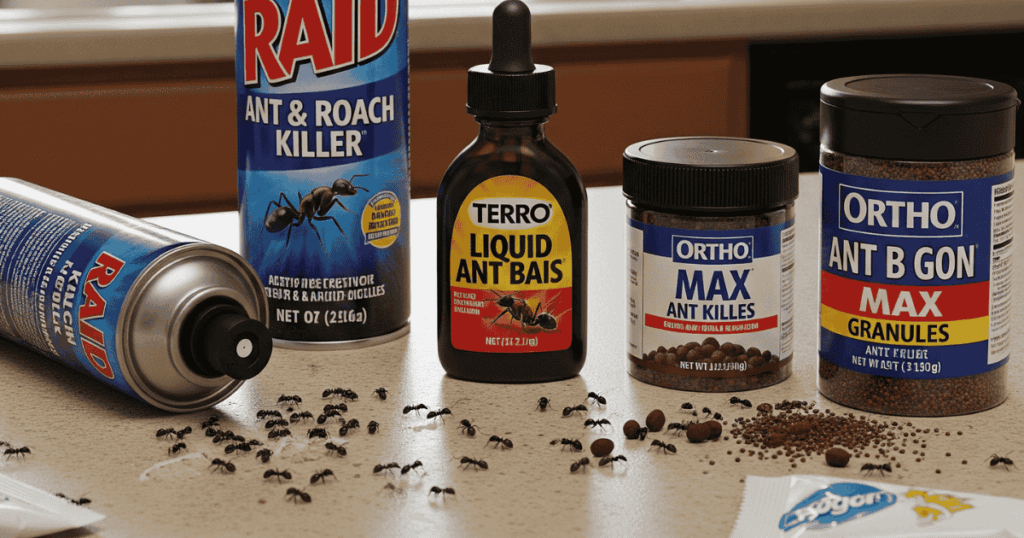
If natural remedies don’t work, safe chemical solutions are often necessary when deciding how to get rid of ants in the kitchen. These options target tough infestations while keeping safety in mind.
Ant Sprays
Useful for killing visible ants quickly, but they don’t eliminate colonies. Best applied to ant trails or entry points, never near food or utensils.
Gel Baits
Among the most effective methods for how to get rid of ants in the kitchen, gel baits are carried back to the nest, killing the entire colony, including the queen.
Granular Baits
Designed mainly for outdoor areas, granular baits prevent colonies from entering your home. Place them near foundations, garden edges, or outdoor nests.
Ant Dusts & Traps
Dusts like boric acid or diatomaceous earth kill ants in hidden spots, while enclosed traps safely lure ants, making them ideal for under sinks and corners.
Safety Tips for Kitchen Use
- Read labels and select indoor-safe products only
- Apply in hidden areas, not on counters
- Store chemicals away from kids and pets
- Never mix remedies, and keep your kitchen ventilated
Consistency is key. Combine chemical methods with cleaning and sealing entry points, ensuring long-term success for how to get rid of ants in the kitchen. Used correctly, they provide reliable results when natural methods fail.
How to Get Rid of Ants in the Kitchen? – Preventing Future Infestations
Long-term success in how to get rid of ants in the kitchen means preventing them from reappearing. Blocking their access points and removing attractants are essential steps.
Seal Entry Points
Caulk up cracks in walls, gaps near windows, and spaces under doors. Ants are tiny enough to get in through almost invisible openings.
Maintain Dry Zones
Keep sink areas dry, repair leaky faucets, and avoid leaving wet sponges out overnight. Moisture is a major attractant.
Outdoor Control
Sometimes, the root problem starts outdoors. Keep trash away from doors, trim vegetation, and treat ant nests near windows and house foundations.
Regular Maintenance Checklist
| Task | Frequency |
| Wipe countertops | Daily |
| Sweep/mop floors | Daily |
| Seal food in containers | Immediate/Always |
| Empty kitchen trash | Daily/every other day |
| Seal cracks and crevices | Monthly inspection |
| Deep clean cabinets/pantry | Once every 3 months |
Say goodbye to kitchen lizards, take action with these effective, eco-friendly solutions.
Conclusion
Ant infestations in the kitchen are an annoyance and a hygiene hazard. But with a structured approach, you can effectively deal with them. From identifying ant species to cleaning, natural remedies, baits, and preventive seals, every step plays a role in ensuring success. The secret to success in how to get rid of ants in the kitchen is consistency, cleaning regularly, removing attractants, and blocking entryways while using remedies strategically. Once tackled, your kitchen becomes a safe, pest-free space again.
For comprehensive and hassle-free ant removal and long-term pest prevention, trust the professionals at Antipest Office. Visit us at the Antipest Office, Our trained technicians use safe and effective methods to protect your home and business. For service bookings and consultations, call us at +91 9819018398 .
How to Get Rid of Ants in the Kitchen? FAQs
What’s the fastest way for how to get rid of ants in the kitchen?
Use liquid ant baits combined with thorough kitchen cleaning for quick, lasting results.
Can vinegar help with how to get rid of ants in the kitchen?
Yes, vinegar removes ant scent trails and acts as a natural deterrent when sprayed on surfaces.
What home remedy works best for how to get rid of ants in the kitchen?
A mix of borax and sugar is the most effective, as ants carry it back to their colony.
Is lemon good for how to get rid of ants in the kitchen?
Lemon juice disrupts scent trails and discourages ants due to its acidic nature.
How does cinnamon help with how to get rid of ants in the kitchen?
Cinnamon powder prevents ants from entering by acting as a strong-scented natural barrier.
Do sprays work for how to get rid of ants in the kitchen permanently?
Sprays only kill visible ants; for permanent relief, combine them with baits that target colonies.
Why is borax mixture effective for how to get rid of ants in the kitchen?
The sugar lures ants, while borax kills them gradually, allowing the poison to spread to the nest.
Can essential oils help with how to get rid of ants in the kitchen?
Yes, peppermint, eucalyptus, or tea tree oils repel ants effectively when sprayed around entry points.
How do I prevent ants after learning how to get rid of ants in the kitchen?
Keep the kitchen dry, store food in sealed containers, and clean thoroughly to prevent re-infestation.
When should I call pest control for how to get rid of ants in the kitchen?
If ant colonies persist despite cleaning, remedies, and traps, professional pest control ensures complete removal.

